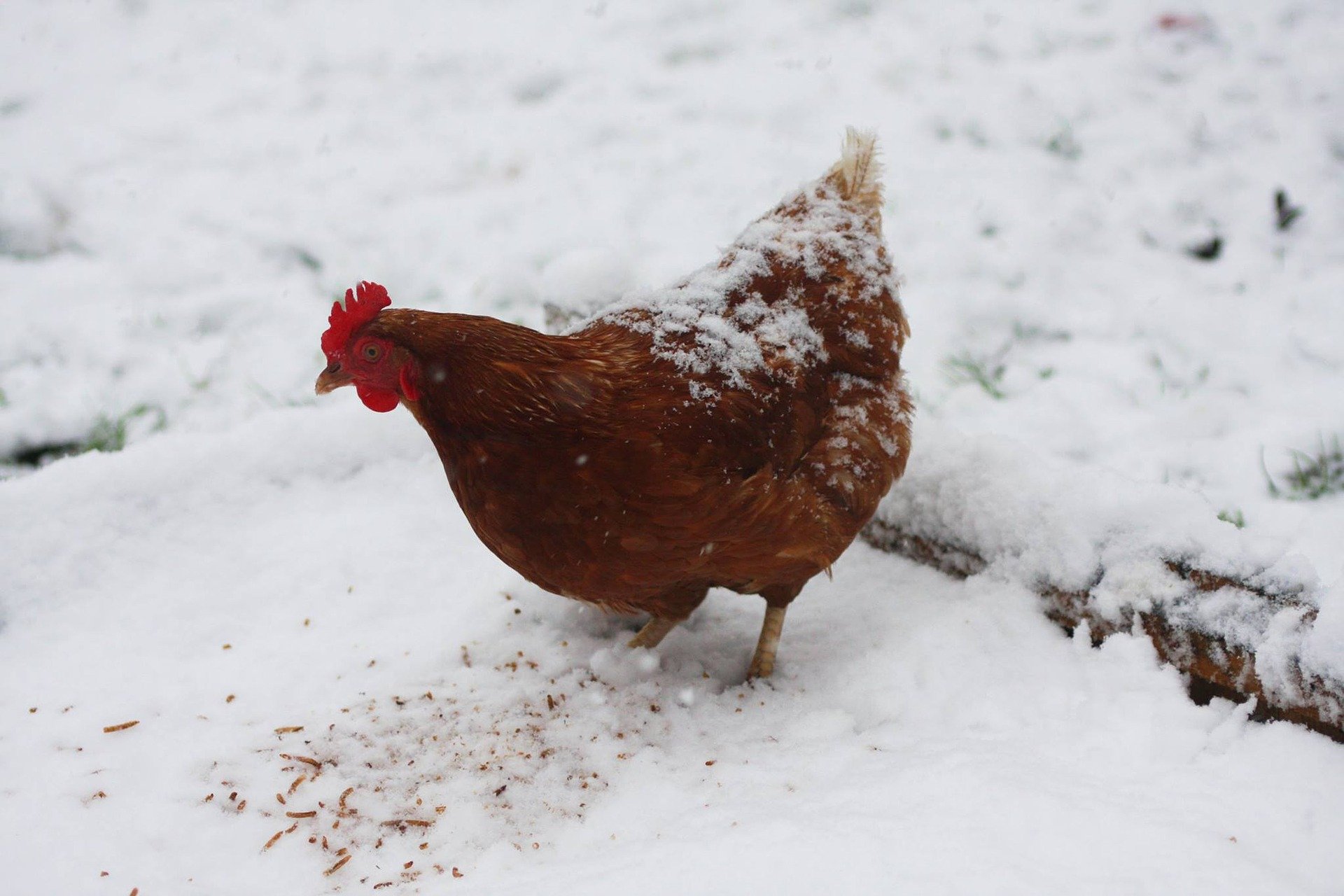Can you believe that it's January already? Winter can be a very challenging time to keep laying hens as there are so many things to take into account. Some of these things seem quite rudimentary, but these are what we see farmers most often "miss" when they call us about production drops for their laying hens.
Lighting
The first issue we have to deal with is adjusting the light in the hen house for the shortening of daylight. The ONLY way to accomplish this is to properly follow a strict regimen of adding 5 minutes per day of artificial light. But max out the increase at 30 minutes per week. This needs to be continued until we reach 15 to 16 hours of light. After a week at this level, we need to scale them back down to about 14 ½ hours total. I have found that many farmers I’ve talked to prefer to have the lights come on gradually starting at about 4:00am and turn off gradually around 6:30pm. This gives the girls their 14 ½ hours. This will help them continue to produce eggs rather than tapering off through the winter. Hens will slow down and eventually stop laying in the winter without light stimulation.
Another aspect of lighting to consider is natural daylight. Sunlight that is too bright causes its own problems. I have gotten calls concerning the color of egg shells. While the color of the shell does not directly reflect the quality of the egg, people love those rich brown shells. If it is too bright in the house, the shell color will lighten. This can also happen with older flocks just because they are older. If there is snow on the ground, the high reflection rate can cause a normally adequate lighting level to increase to being too bright. Curtains on your windows can be your best friend. Also, make sure that there are curtains on your nest boxes. Layers like a dark area to lay their eggs. The curtains will also reduce the occurrence of peck outs.
Feed for Winter Temperatures:
Issue #2 is their feed. Chickens eat enough feed to meet their energy needs. If you are feeding your chickens a ration that was formulated to feed through warmer weather, they will over eat in the winter. They need more energy to keep themselves warm in the colder weather. When they do this, they are getting too much protein. This extra protein will cause the birds to lay more Jumbo eggs. This is typically not a preferred outcome. Contact the office to have your feed ration adjusted for the colder weather. Remember, once a hen starts laying jumbo eggs, it is VERY difficult (if not impossible) for us to get the egg sizes smaller again.
Now that we have the lighting and feed adjusted for the winter months, what else needs to be addressed. Whenever dealing with any animal health, there are 3 things that must first be evaluated. And this is the order of importance.
- Air Quality! No animals will thrive on stale air. It is very important to make sure that there is a consistent air exchange in your layer house. This can be accomplished through the use of fans, windows, or properly designed venting. A major air quality issue is ammonia. Chickens are affected by levels as low as 10ppm (parts per million). Many people, when asked, state that their air is great. I can’t smell a thing. People cannot smell ammonia until it reaches 25ppm. Extended exposure to this level will permanently impair the chickens. Air should be exchanged 4 to 6 times per day.
- Water Quality! A frozen waterer is the same as not having any water at all. If the temperature can fall below freezing, there needs to be a means of keeping the water warm, or someone assigned to make sure that it is not freezing over. The ideal temperature for the water is between 70 – 80 degrees F. This is ideal, but we all know that it may not be reality.
- Feed Quality! Everyone and everything needs to eat. Please make sure that the feed is not only balanced properly, but it is fresh! Ideally any feed is best when used within 14 days after milling. But please make sure that it does not go over 30 days. All of the girls need to be able to eat at the same time. We all know that this doesn’t actually happen, but stranger things have. Also, please make sure that the feeders are set at the correct height. Once again, the lip of the feeder should be level with the back of an average height chicken. Proper feeder height reduces waste and selective feeding. They need everything in the ration. Another aspect of the feeding system for chickens that is often overlooked is grit. Please make sure that they have ample access to grit. Granite Grit is very inexpensive. A blend of granite grit and oyster shells (60:40 granite:oyster shell) vastly improves feed conversion, overall health, and with the extra calcium of the oyster shells, egg shell quality.
If you do experience any health issues, please do not hesitate to call our office for assistance. While we are not veterinarians, we have worked with many flocks and farmers and have found very helpful methods of dealing with many health issues.
Here’s looking forward to a productive winter and spring!
Want to learn more about how Fertrell's products can help you maintain a happy and healthy flock this year? Read about our original best-seller Poultry Nutribalancer and purchase it online to ship right to your door!
